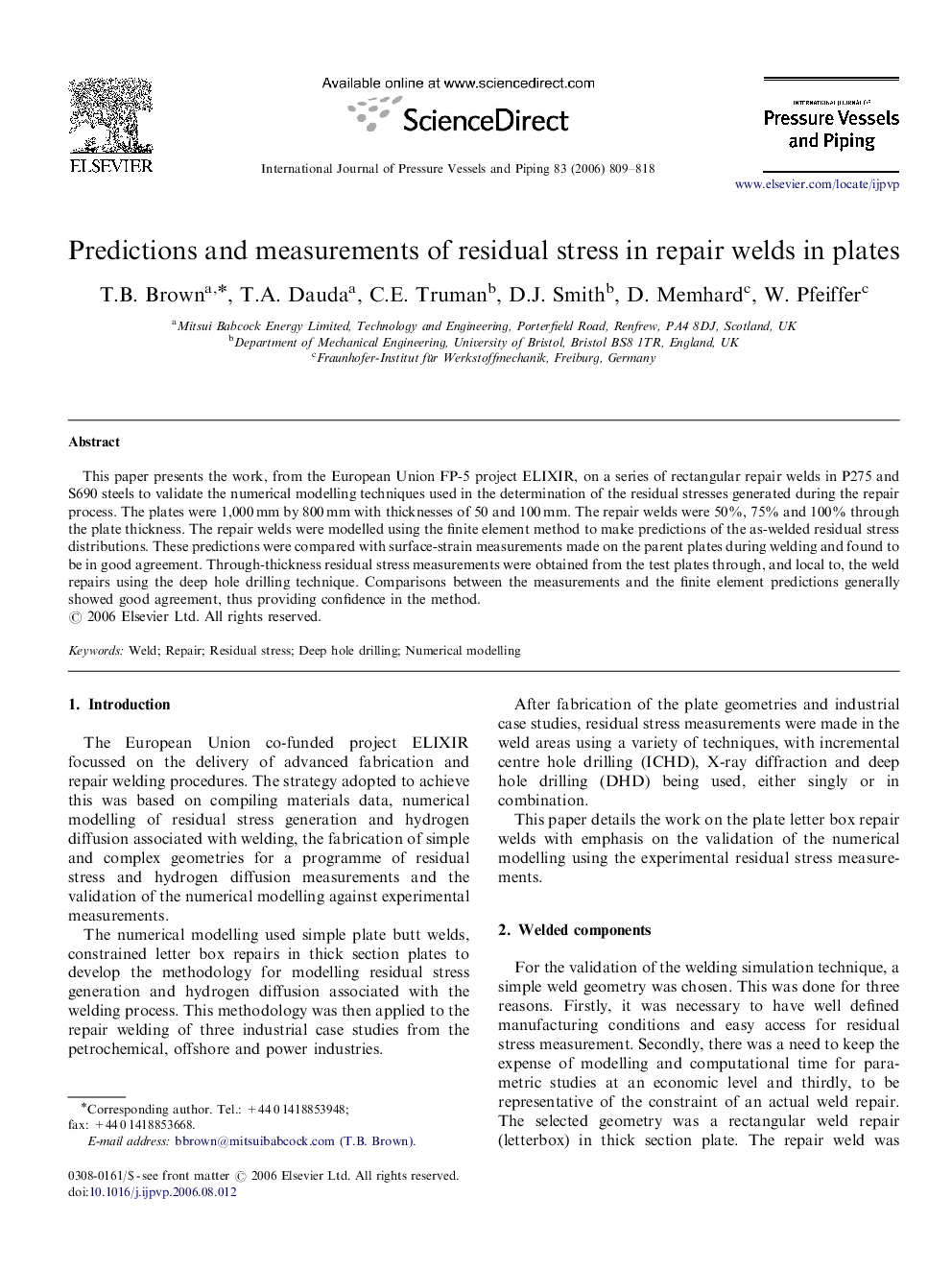| Article ID | Journal | Published Year | Pages | File Type |
|---|---|---|---|---|
| 791047 | International Journal of Pressure Vessels and Piping | 2006 | 10 Pages |
This paper presents the work, from the European Union FP-5 project ELIXIR, on a series of rectangular repair welds in P275 and S690 steels to validate the numerical modelling techniques used in the determination of the residual stresses generated during the repair process. The plates were 1,000 mm by 800 mm with thicknesses of 50 and 100 mm. The repair welds were 50%, 75% and 100% through the plate thickness. The repair welds were modelled using the finite element method to make predictions of the as-welded residual stress distributions. These predictions were compared with surface-strain measurements made on the parent plates during welding and found to be in good agreement. Through-thickness residual stress measurements were obtained from the test plates through, and local to, the weld repairs using the deep hole drilling technique. Comparisons between the measurements and the finite element predictions generally showed good agreement, thus providing confidence in the method.
